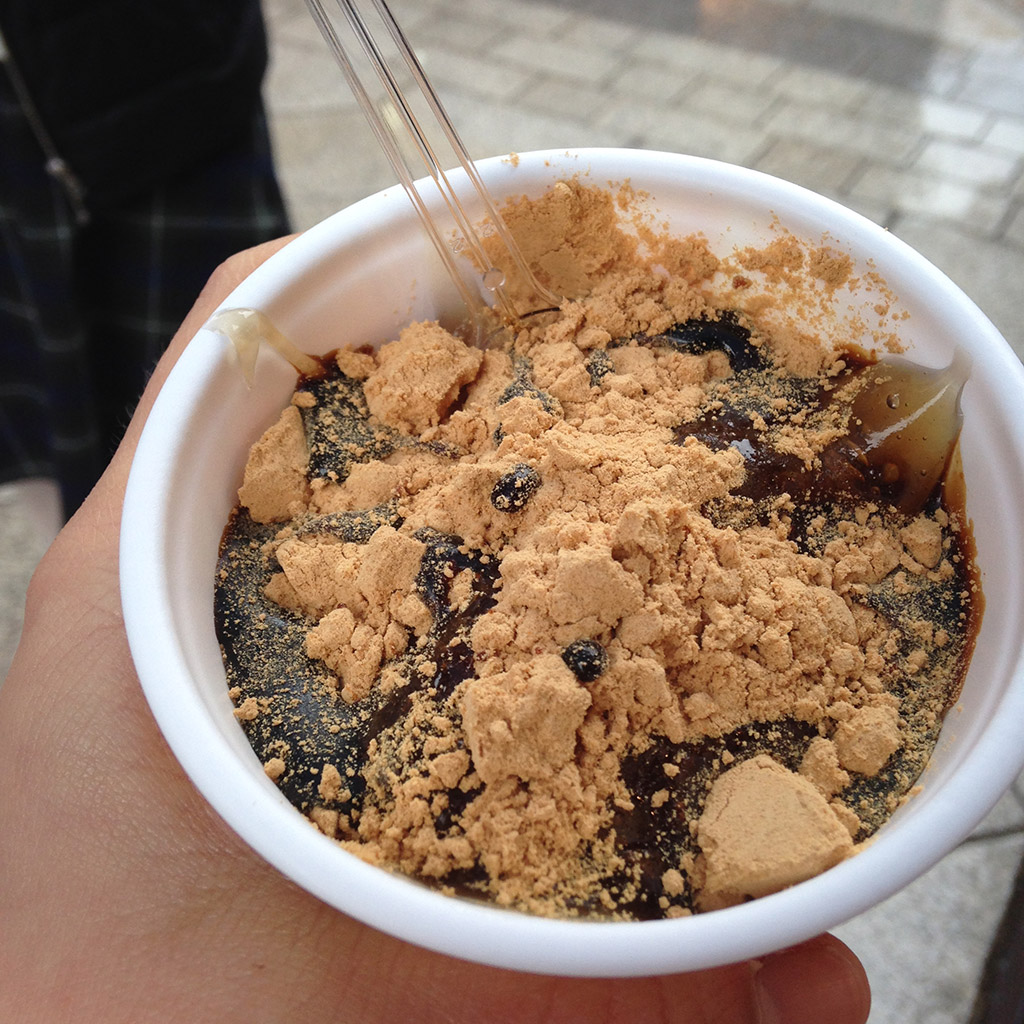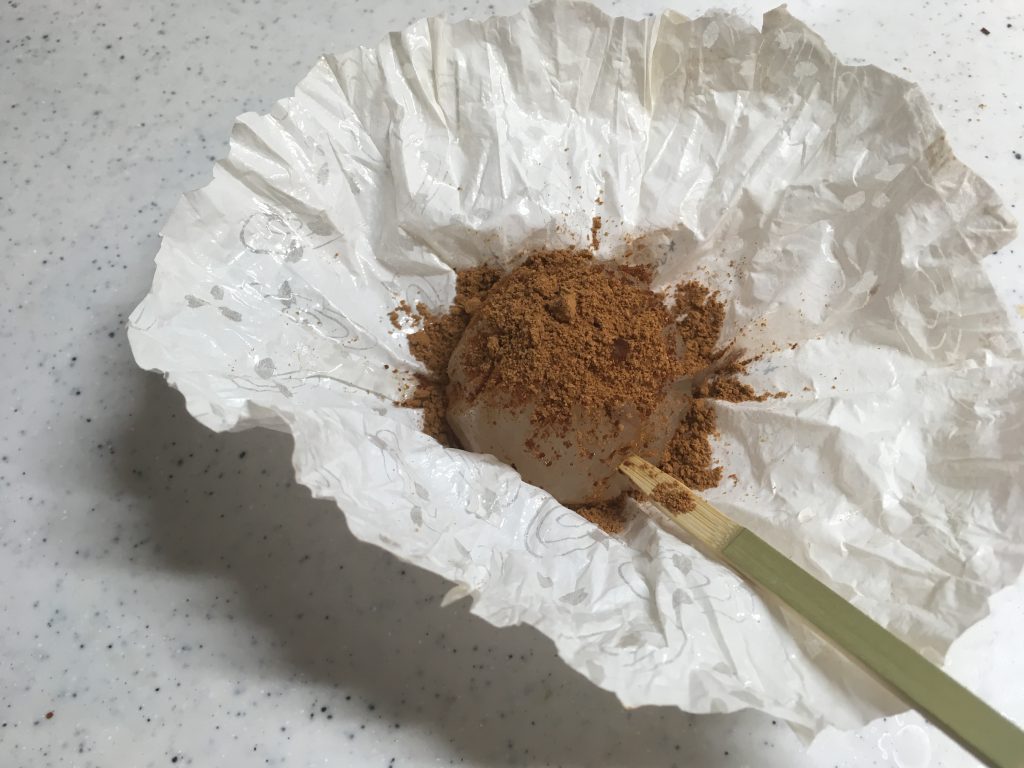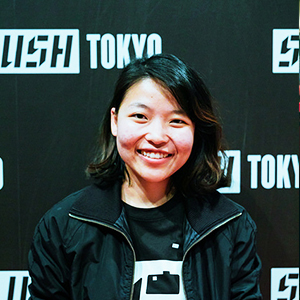Warabi mochi
JAPANESE FOODS
09.07.2017
The gem of Japanese summer sweets.
I know summer has come in Japan when I see supermarkets starting to display colorful little trays of warabi-mochi balls in the confectionery section.

Green tea-flavoured warabi-mochi from Japanese supermarkets
There is a plant called ‘warabi’…
Warabi-mochi is a favourite Japanese dessert made from the starch of the “warabi” plant. It is one type of edible fiddlehead greens. Warabi is distinctive from other mochi (sticky) sweets by the milder sweetness and transparent lighter, jelly-like texture.
I have seen the warabi plant on one of my hikes in the Kanto region and have learnt that it is little vegetable that grows in the wild. People often climb hills and mountains in search for this tiny plant. The root is the only part of the plant that is used to extract the rare “hon-warabi-ko” (true warabi starch powder) which is later used to make the confectionary. This makes warabi-mochi made from 100% pure warabi plant starch an indulgence since prior to the Edo period and still much an expensive luxury item in today’s standards.
Where to find warabi-mochi
Although I have never had the chance to taste the “true warabi starch powder” myself, the warabi-mochi I tried in different places around Japan has become one of my favourite joys of Japan’s summer.

Warm kuzu-mochi I found at the Kanamaru Matsuri (Penis Festival).
Kuzu-mochi is a sister of warabi-mochi. However, it is made from the kudzu root – a plant native to Japan
Apparently, one of the best warabi-mochi in Japan is a Kyoto’s original specialty. It is shaped like a dome, covered in a kinako (roasted soy powder) powder and filled with traditional red bean paste called anko. It is said to be made from the most purest warabi starch available and should be enjoyed fresh to fully appreciate the fine ingredients and taste. If you are going to Kyoto, be sure to check them out!
Warabi-mochi available to casual consumers in the market comes in bite-sized ball or cube shape with black sugar syrup (kuromitsu) and kinako. They are made more affordable by substitution of commonly found root vegetables like sweet potatoes. These are transparent, more chewier and of lighter colour than those made by warabi-mochi specialized shop which is darker brownish and of higher quality. A single box would cost less than three dollars at any grocery store. It is a cool, not-too-sweet treat, great to share under the heat of the Japanese summer.
I was introduced to the melting-in-the-mouth experience of a high quality warabi-mochi in Tokyo by a former Japanese housemate. One day, she brought home a box of sanuki warabi-mochi from Kanesue sweet shop inside the JR Ikebukuro station. Ever since then their kiosk has been my go to every time I am in Ikebukuro.

Warabi-uiro mochi – a specialty of Nagoya City. Uiro-mochi is Nagoya’s original sweet made from rice flour.
The right combination of warabi and uiro mochi creates an interesting chewy yet still light texture
Japanese confectionery has become known worldwide for its matcha green tea, exotic Kit Kats and Harajuku crepes yet if you were invited to a Japanese home during summer. Chances are, you would be served the beloved warabi-mochi for dessert.
By Ngoc (Norah) Hoang




